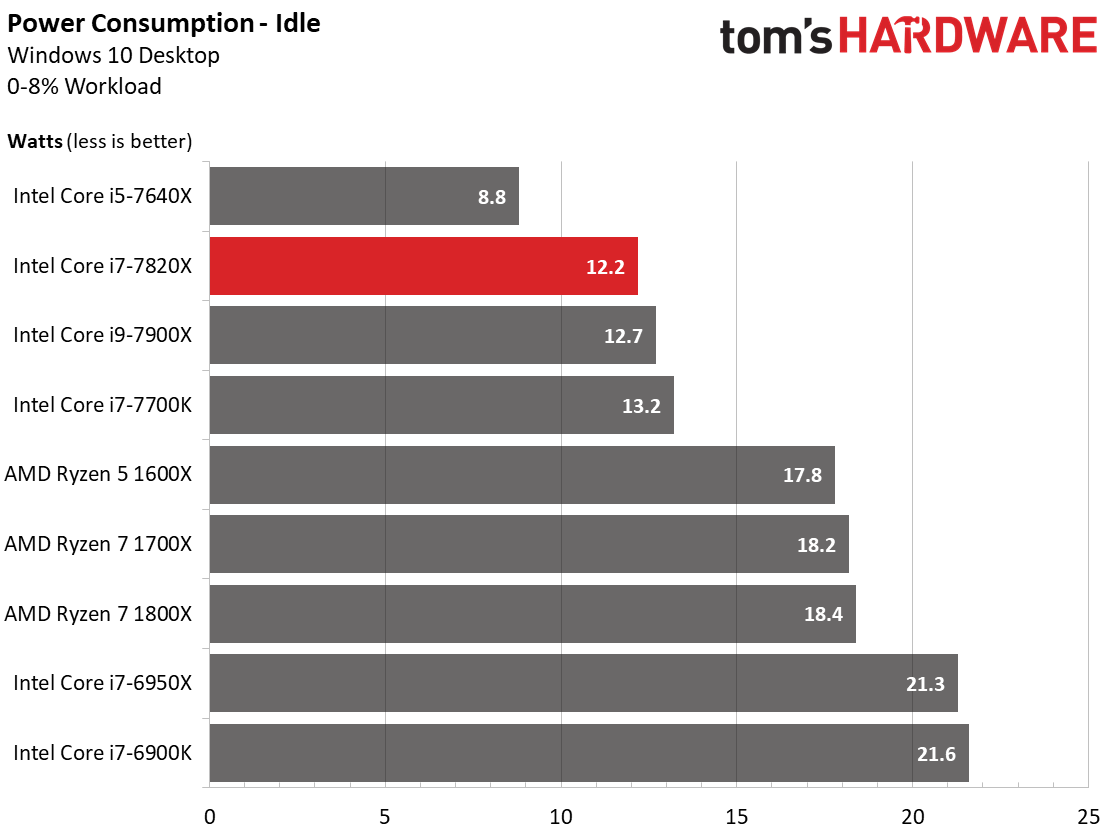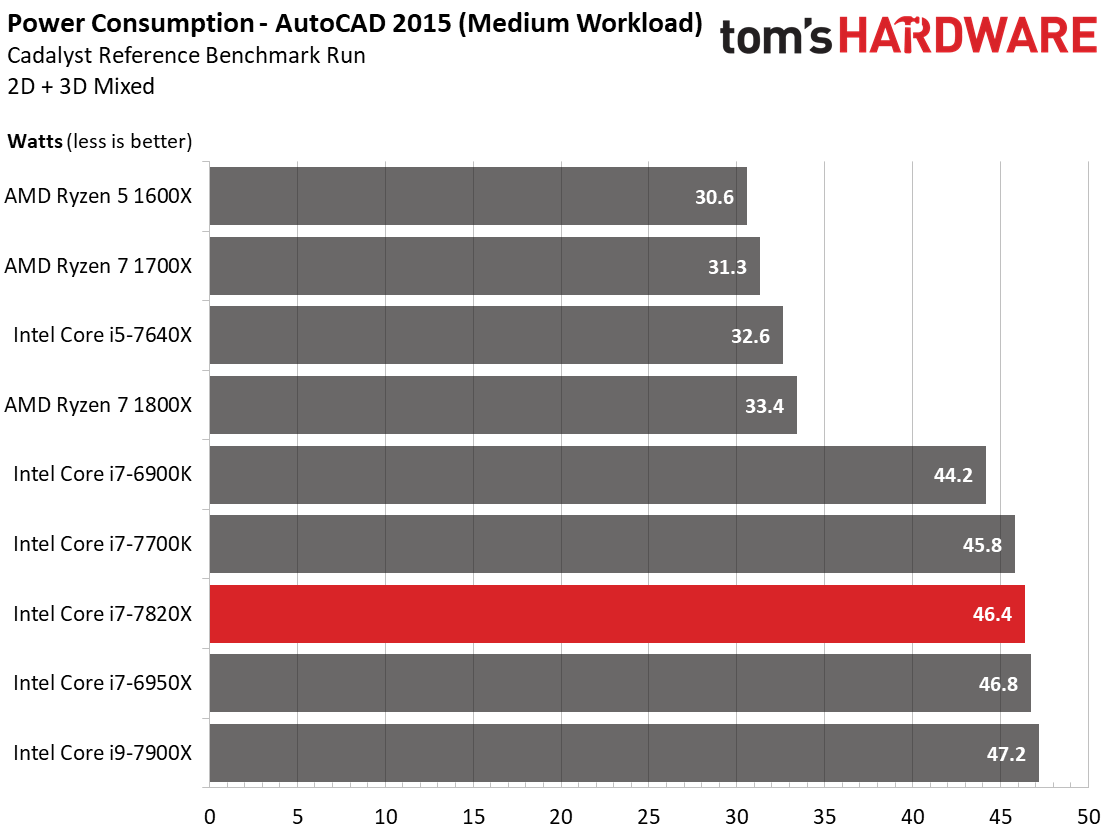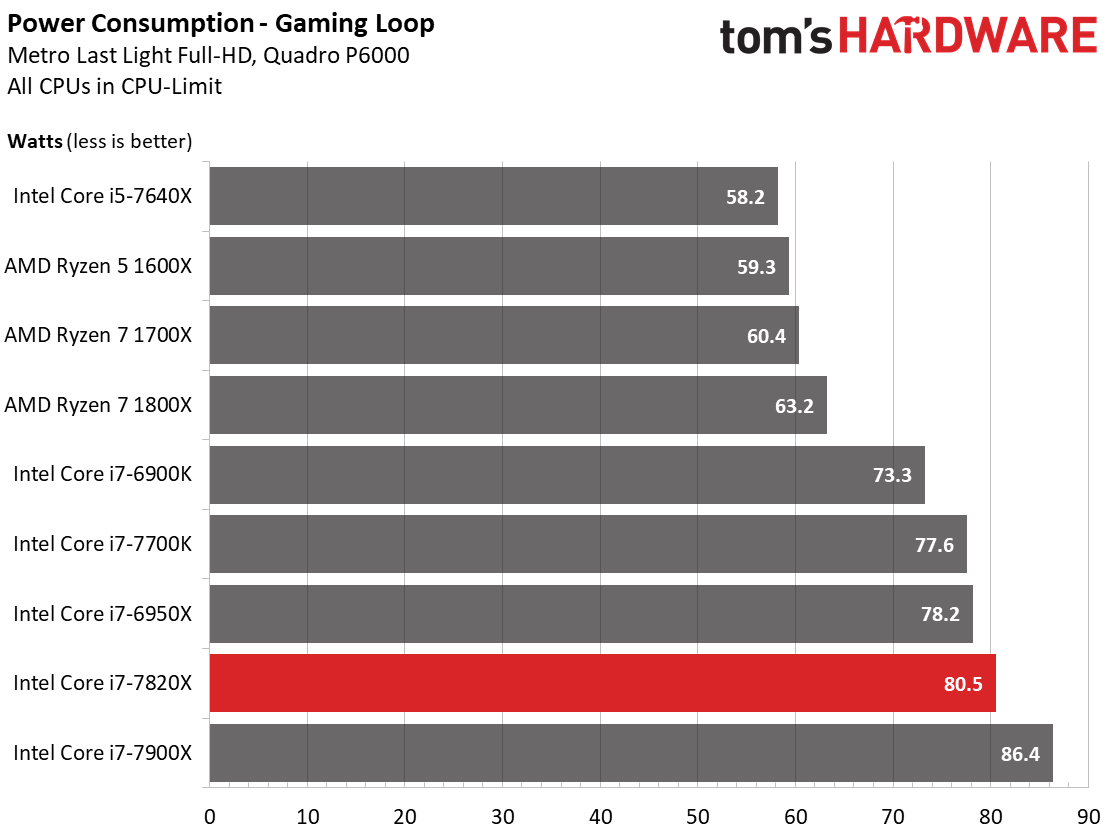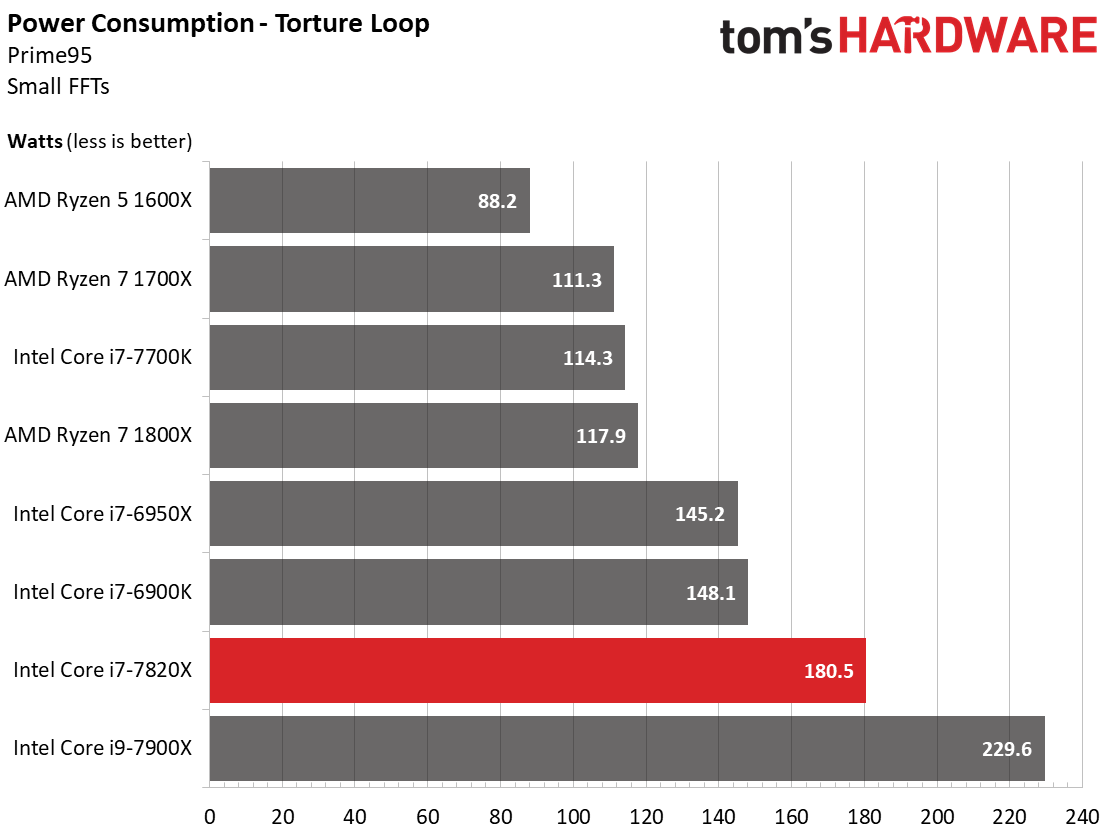Intel Core i7-7820X Skylake-X Review
Why you can trust Tom's Hardware
Power Consumption & Thermals
Intel isn't using a soldered integrated heat spreader (IHS) for Skylake-X or Kaby Lake-X. Instead of the solder most enthusiasts clamor for, heat moves from the die to the IHS through thermal paste. This decision has implications for both our power consumption measurements and overclocking efforts, as you no doubt saw in our Skylake-X Mess Explored: Thermal Paste And Runaway Power article.
We measure power consumption after the voltage converters and CPU, using points on the motherboard.
Power Consumption
These numbers are generated using stock motherboard settings; any significant under-volting has no effect, except to cause stability problems.
Core i7-7820X consumes significantly less power at idle than Broadwell-E, and it also provides a small benefit compared to the ten-core Core i9-7900X.
AMD's Ryzen processors use quite a bit more power during idle, and that doesn't change much between the eight- and six-core models. Its Zeppelin die is a unified four-core building block, so it makes sense that AMD still feeds the disabled silicon with power.
AutoCAD is lightly threaded, but even mundane workloads trigger Skylake-X's aggressive Turbo Boost frequencies. Less than one watt separates the Core i7-7820X and i9-7900X. Meanwhile, the previous-gen Core i7-6900K doesn't hit the same clock rates, conveying a slightly lower power figure.
The Ryzen models are in a class of their own, though we have to point out that they (along with Core i7-6900K) underperform Skylake-X. So, our power measurements aren't indicative of overall efficiency.
Get Tom's Hardware's best news and in-depth reviews, straight to your inbox.
The Skylake-X processors draw more power than competing CPUs during our Metro Last Light gaming loop. We do observe a ~6W reduction going from Core i9-7900X to Core i7-7820X, though. Surprisingly, the -6900K is the most frugal Intel processor in the group.
Kicking off a Prime95 run unleashes the Core i9-7900X's hideous power consumption. Core i7-7820X is a little more civil, likely due to its disabled FMA units. But it still draws a lot more power than the Broadwell-E-based -6900K or Ryzen 7s.
Thermal Performance
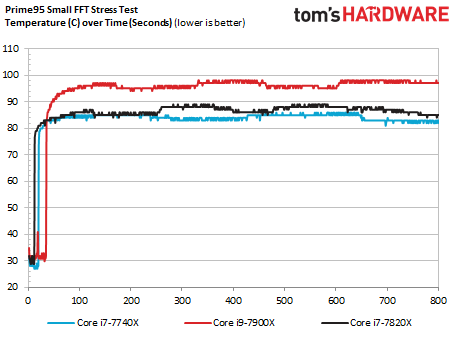
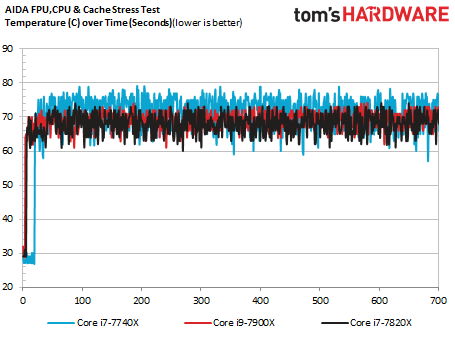
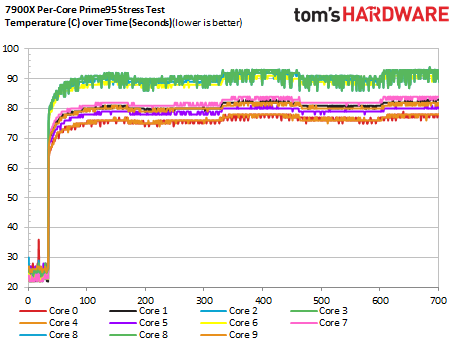
Thermal output was recorded during AIDA and Prime95 stress tests at stock frequencies. We used the Corsair H100i v2 cooler, which provided enough headroom to keep up with these CPUs.
As expected, we observe a slightly lower average temperature from Core i7-7820X compared to Core i9-7900X.
Speaking of, the Core i9-7900X encountered difficulties during the Prime95 AVX workload. We use AIDA's system stability test window to monitor temperatures during our test run, and it detected thermal throttling. Typically, AIDA provides a percentage to quantify the severity, though we don't know what caused the slow-down.
The system generates bit-coded throttling flags based on three variables: Tcore, Tpackage, and VRM temperatures. AIDA detects these flags, but doesn't specify which one the warning is based on. We suspect the VRMs are to blame in this case.
MORE: Best CPUs
MORE: Intel & AMD Processor Hierarchy
MORE: All CPUs Content
Current page: Power Consumption & Thermals
Prev Page Workstation & HPC Performance Next Page Final Analysis
Paul Alcorn is the Editor-in-Chief for Tom's Hardware US. He also writes news and reviews on CPUs, storage, and enterprise hardware.
-
cknobman Just want to say the Ryzen 7 1800x isnt $500 anymore and has not been for weeks now.Reply
The processor is selling for $420 or less. Heck I bought mine yesterday from Fry's for $393 -
artk2219 Reply19984543 said:Just want to say the Ryzen 7 1800x isnt $500 anymore and has not been for weeks now.
The processor is selling for $420 or less. Heck I bought mine yesterday from Fry's for $393
Not to mention the fact that you can find the 1700 for even less, and more than likely be able to bump the clocks to atleast match the 1800x. Microcenter was selling them for 269.99 last week. -
Ne0Wolf7 At least they've done something, but it still too expensive to sway me.Reply
Perhaps full blown profesionals who need something a bit better than what Ryzen has right now but can go for an i9 would appreciate this, but even hen he/she/it would probably wait to see what threadripper had to offer. -
Scorpionking20 So many years past, I can't wrap my head around this. Competition in the CPU space? WTH is this?Reply -
Houston_83 I think the article has some incorrect information on the first page.Reply
"However, you do have to tolerate a "mere" 28 lanes of PCIe 3.0. Last generation, Core i7-6850K in roughly the same price range gave you 40 lanes, so we consider the drop to 28 a regression. Granted, AMD only exposes 16 lanes with Ryzen 7, so Intel does end the PCIe comparison ahead."
Doesn't Ryzen have 24 lanes? Still under intel but I'm pretty sure there's more than 16 lanes. -
artk2219 Reply19984718 said:I think the article has some incorrect information on the first page.
"However, you do have to tolerate a "mere" 28 lanes of PCIe 3.0. Last generation, Core i7-6850K in roughly the same price range gave you 40 lanes, so we consider the drop to 28 a regression. Granted, AMD only exposes 16 lanes with Ryzen 7, so Intel does end the PCIe comparison ahead."
Doesn't Ryzen have 24 lanes? Still under intel but I'm pretty sure there's more than 16 lanes.
Ryzen does have 24 lanes, but only 16 are usable, 8 are dedicated to chipset and storage needs. -
JimmiG Reply19984740 said:19984718 said:I think the article has some incorrect information on the first page.
"However, you do have to tolerate a "mere" 28 lanes of PCIe 3.0. Last generation, Core i7-6850K in roughly the same price range gave you 40 lanes, so we consider the drop to 28 a regression. Granted, AMD only exposes 16 lanes with Ryzen 7, so Intel does end the PCIe comparison ahead."
Doesn't Ryzen have 24 lanes? Still under intel but I'm pretty sure there's more than 16 lanes.
It does, but only 16 are usable, 8 are used for chipset and storage needs.
16X are available for graphics as 1x16 or 2x8.
4X dedicated for M.2
4X for the chipset that's split into 8x PCI-E v2 by the X370 and allocated dynamically IIRC -
Zifm0nster Would love to give this a chip a spin.... but availability has been zero.... even a month after release.Reply
I actually do have work application which can utilize the multi-core. -
Math Geek does look like intel was caught off guard by amd this time around.Reply
will take em a couple quarters to figure out what to do. but i'm loving the price/performance amd has brought to the table and know intel will have no choice but to cut prices.
this is always good for the buyers :D -
Amdlova Why we have overclocked cpus ons bench but dont have power compsumation! this review is biased to intel again !? are tomshardware fake news ?Reply
